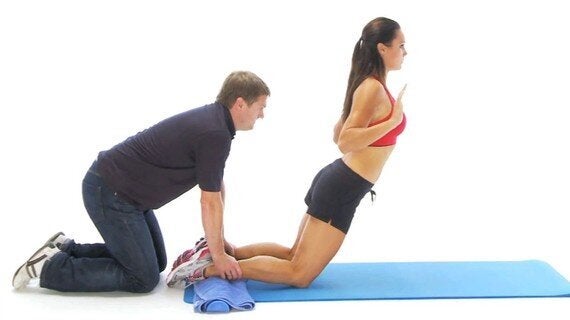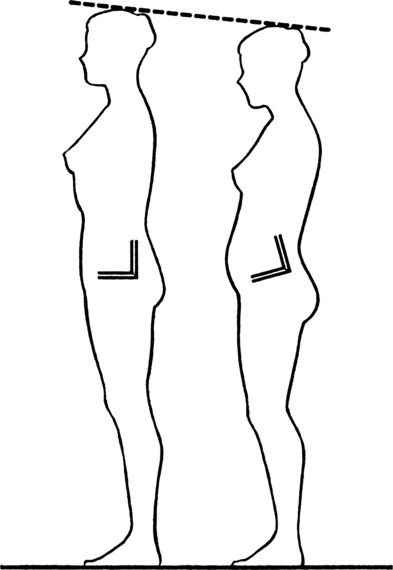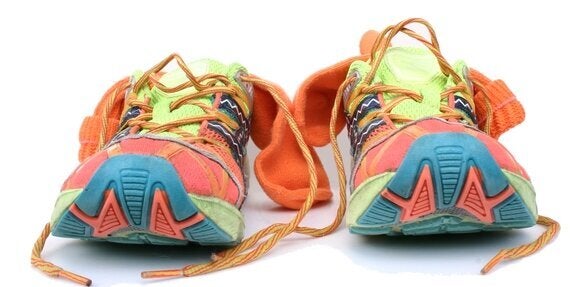There's less than one month to go until the London Marathon, and competitors will be ramping up their training. The problem with increasing volume is that you also increase the chances of injury. Fortunately, there are steps you can take to make sure you're fighting fit when marathon day arrives:
1.Remember the forgotten muscle - the VMO
The vastus medialis oblique (VMO) is one of four muscles in the quadriceps. If you tense your quad, you may see a bit of muscle near the top inside of your knee, this is your VMO. It is used every time you push off the ground.
A strong VMO will help to stabilize the knee, preventing it from collapsing inwards, putting it in an unstable and inefficient position. It will also help to prevent Patellofemoral pain syndrome, also called runner's knee, which accounts for 16.5% of knee pain.
To strengthen your VMO, try performing VMO-lockouts. Attach a resistance band to a stationary object at knee height, and put the band around your knee. Go onto the ball of your foot, and then concentrating on your VMO, lower your heel back to the ground. Perform 15 reps on one leg, then repeat with the other leg.
2.Slowly does it - Eccentric hamstring work
The hamstrings are a vital part of your running mechanics. They are used to whip your heel up towards your glutes while the knee is in a flexed position.
Hamstring injuries are especially common in runners, and can be caused by a number of factors, including an imbalance of strength compared to the quadriceps.
There are many exercises used to strengthen the hamstrings, including deadlifts or hamstring curl machines. These are both very effective, but a recent study has demonstrated the importance of putting more focus on the eccentric phase; the part of an exercise when the muscle lengthens, such as the downward phase of a deadlift.
A study in the British Study of Sports Medicine showed that regularly performing the Nordic Curl can decrease the likelihood of hamstring injuries. During the Nordic Curl, the athlete sits upright on their knees and slowly lowers themselves to the ground while holding most of the tension through the hamstrings, as shown in the picture below. Aim to hold the eccentric movement for 3-5 seconds before falling completely and pushing yourself back to your start position.

image courtesy of www.sportsinjuryclinic.net
3.Twerk it out - Increase your glute strength
Most of the power when running comes from the glutes and hamstrings, not the quads, as most people believe. To prevent injury and to improve stride efficiency in your running it is important you keep the glutes activated.
During our daily routines, we spend a large percentage of our time sitting down, and can cause our glutes to switch off. When we then decide we want to use them when running, they may stay deactivated.
To help prevent injury we suggest completing a 10-minute circuit of low load glute exercises before heading out on that run. Exercises such as hip thrusters, donkey kicks and side lying clams are great for targeting all areas of the glutes.
4.Hips don't lie - Stretch your Hip Flexors
The Hip Flexor is located inside your hips along with the Rectus Femoris. They help to raise the knee towards the chest (Rectus Femoris) and externally rotate the hip (Hip flexor).
Keeping these muscles supple is the key to improving your stride length and preventing injury. If the muscles in the hip become locked up due to overuse they can cause forward lean, putting pressure on the hamstrings, glutes and lower back.
To help keep on top of those pesky hip flexors we suggest regular dynamic stretches before running, and long static stretches post training.

5.These boots are made for walking - Get appropriate trainers
Preparing for a marathon should include finding the perfect shoes for you: ones which support the shape of your foot. The balance, support and propulsion of a runner's body all depend on the foot. Keeping the feet supported should be your number one priority.

These tips and exercises should reduce the risk of getting an injury before race day, and may even improve your performance! If you're running the marathon in April, then we wish you luck. Let us know how it goes!